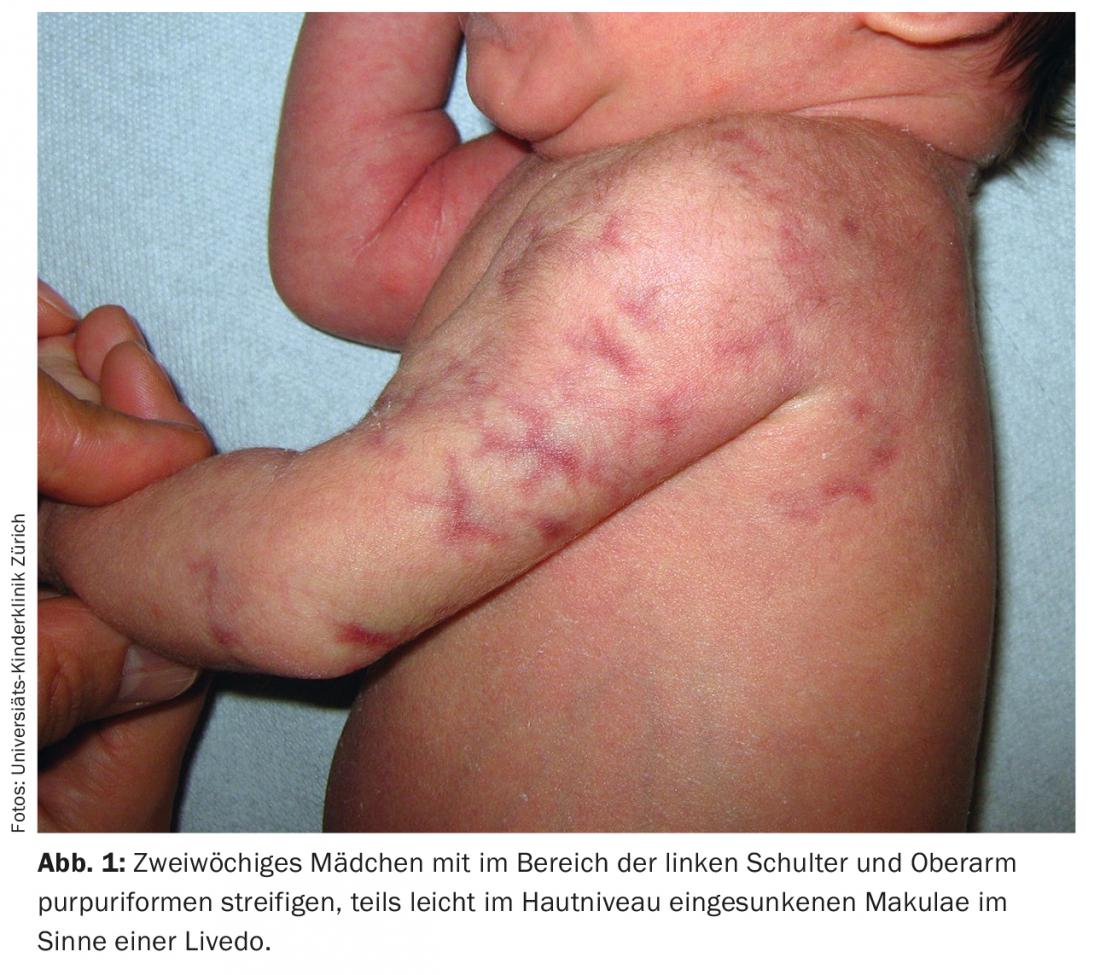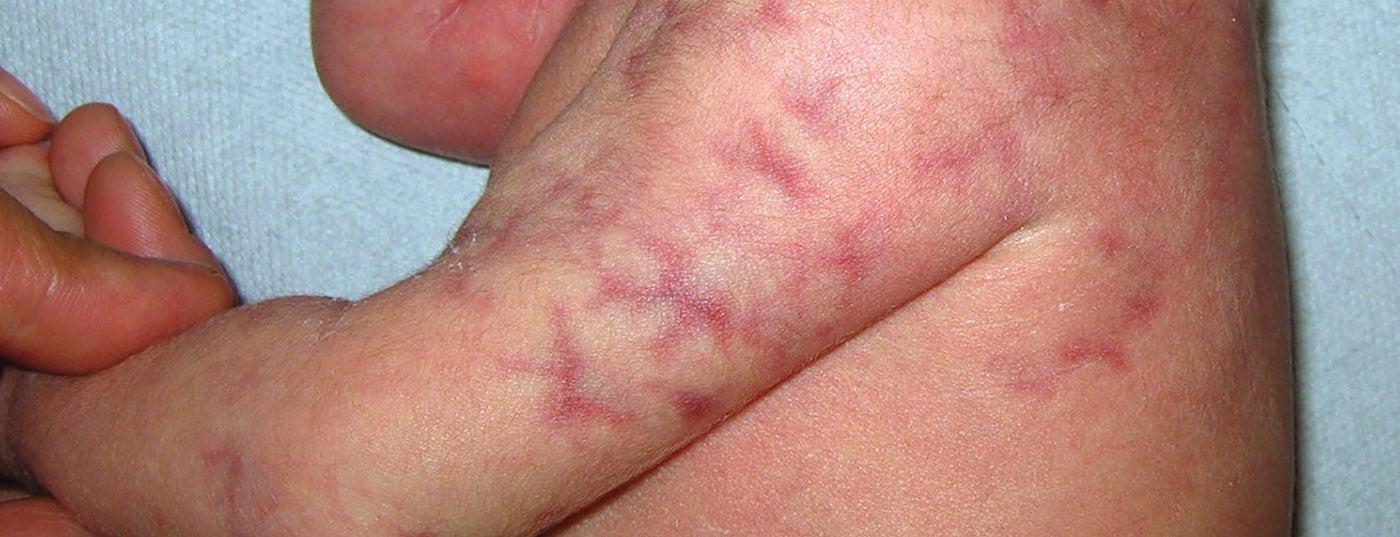Case report: This now two-week-old girl showed a reddish-purple reticular pattern of the skin on her left arm and shoulder already at birth. The pregnancy and spontaneous term birth had been unremarkable. Clinical examination reveals purpuriform striated macules, some slightly sunken into the skin level, consistent with livedo (Figs. 1 and 2). Lateral comparison reveals a discrete reduction in circumference of the affected limb with symmetrical length of the arms. In other respects, the newborn was in excellent general condition and the general internistic examination incl. cardiopulmonary auscultation was unremarkable.
Quiz
Based on this information, which is the most likely diagnosis?
A Cutis marmorata teleangiectatica congenita
B Neonatal lupus
C Livedo racemosa iR. Antiphospholipid syndrome
D Klippel-Trenaunay syndrome

Diagnosis and Discussion: The presentation here of a segmentally arranged livedo clearly visible at birth associated with mild atrophy of the affected limb is diagnostic of cutis marmorata teleangiectatica congenita (CMTC; OMIM 219250) (Answer A).
CMTC is a sporadic, highly characteristic vascular malformation of unclear etiology that primarily affects the dermal capillaries and venules [1].
Although described as a rare entity, the true incidence of CMTC is likely significantly underestimated, as we encounter this diagnosis in our office (or via teledermatology) an average of eight to ten times per year. Effectively, the diagnosis can be made clinically and imaging techniques are not indicated. In addition to the described livedo at birth, apart from associated hypotrophy (usually circumference reduction; in 25-40%), skin atrophy (6%) may also be present until ulceration [1,2]. Two-thirds of cases involve a lower extremity, but as in this case, an arm and shoulder may also be involved or extensive bilateral lesions may occur. If extensive CMTC or facial involvement is found (generally rare), associated glaucoma must be promptly excluded – this may be congenital or occur during the first months/years of life [2–4].

CMTC must be distinguished from skin marbling, which occurs physiologically in the neonatal period, in particular. This is typically symmetrical and normalizes rapidly in warmth. Further to be distinguished from CMTC is macrocephaly-capillary malformation, which includes extensive, more patchy capillary malformations (without the classic livedo presentation) and other malformations [5].
In principle, the prognosis of CMTC is very good, as the skin lesions usually fade significantly spontaneously during the first three to five years of life [1,2]. Laser therapy (e.g. dye laser) due to an aesthetic impairment in the course is a therapy option, but usually not necessary.
Literature:
- Kienast AK, Hoeger PH: Cutis marmorata telangiectatica congenita: a prospective study of 27 cases and review of the literature with proposal of diagnostic criteria. Clin Exp Dermatol 2009; 34: 319-323.
- Amitai DB, et al: Cutis marmorata telangiectatica congenita: clinical findings in 85 patients. Pediatr Dermatol 2000; 17: 100-104.
- Devillers AC, et al: Cutis marmorata telangiectatica congenita: clinical features in 35 cases. Arch Dermatol 1999; 135: 34-38.
- Weilepp AE, Eichenfield LF: Association of glaucoma with cutis marmorata telangiectatica congenita: a localized anatomic malformation. Journal of the American Academy of Dermatology 1996; 35: 276.
- Martínez-Glez V, et al: Macrocephaly-capillary malformation: Analysis of 13 patients and review of the diagnostic criteria. American Journal of Medical Genetics Part A 2010; 152: 3101-3106.
DERMATOLOGIE PRAXIS 2015; 25(3): 22-23











